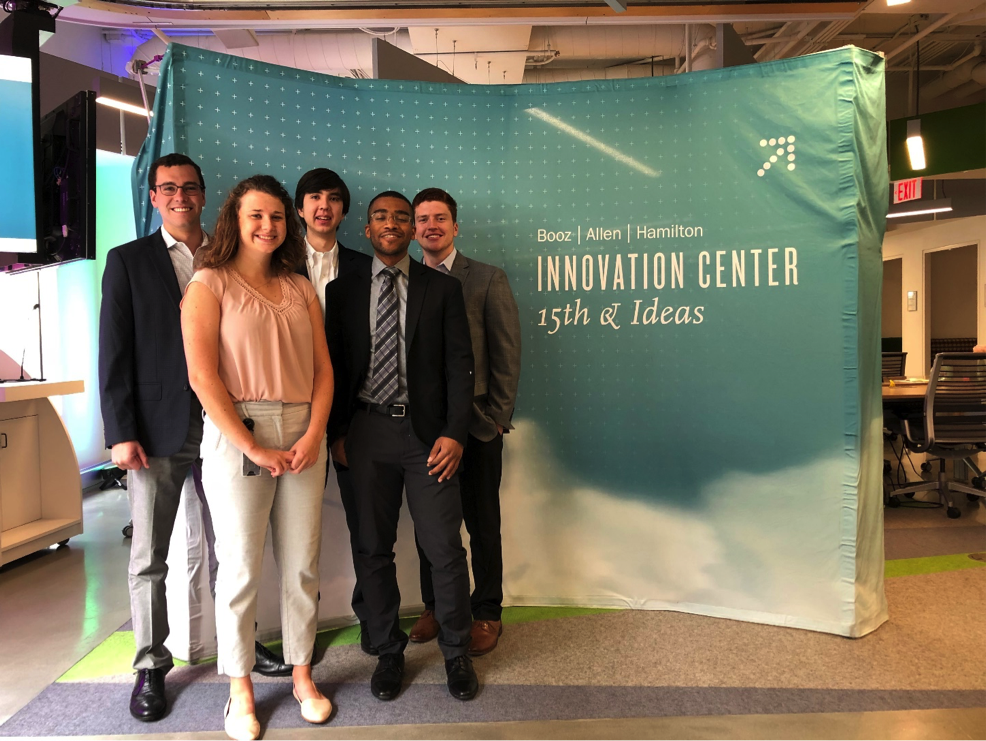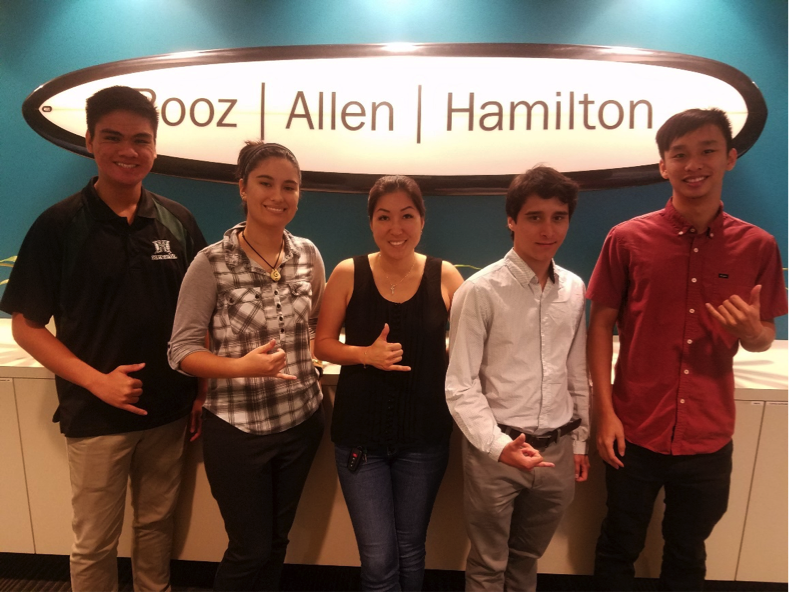Booz Allen Interns Build Virtual Reality Training Tools for Real-World Challenges
Put down your headset: Virtual reality (VR) and augmented reality (AR) aren’t just for gamers anymore. More and more we’re using immersive technology for a variety of real-world scenarios—from performing surgery in a virtual operating room to training military personnel. The goal is to present a dynamic, yet artificial environment that replicates the real world.
At Booz Allen, three teams of Summer Games interns are using VR and AR, too. They’re developing innovative solutions to improve airport security, train Air Force drone pilots, and help emergency preparedness. In exploring how to use these technologies, they’re also integrating data science and artificial intelligence (AI) to improve human-centered experiences.
Learn more about the teams’ work in their own words:
Enhancing Airport Security with VR Training
“We’re developing a VR tool to improve airport security by enhancing the on-the-job performance of airport screeners nationwide. To improve screening skills of the agents and reduce costs, our implementable VR training program has different hands-on training modules,” says Ryan Holman from the Washington, DC-based team. “In a widely published 2015 report assessing airport security screening, banned items, like explosives and weapons, got through the screening process in 67 out of 70 tests. In addition, the existing agent training process is very expensive. Integrating artificial intelligence allows us to tailor training scenarios to fit each person’s strengths and weaknesses. Virtual reality is a viable and effective solution to improve officer safety and skills. The success of our tool serves as a benchmark for other federal VR training programs.”
Learning to Fly in a Virtual Cockpit
“Airmanship training in your pocket—that’s what our team is developing. It’s a mixed-reality application that projects a high-resolution, 3D model of a Texan II aircraft cockpit,” says Elizabeth Tate of the San Antonio, Texas-based team. “About 1,400 airmen train annually in San Antonio to become Air Force drone pilots, studying the foundational skills they need to fly drone-type aircraft upon deployment. While they’ll never sit in the real aircraft, they must master all the critical elements of aviation. Using our app on any Android smartphone, airmen can sit in the virtual cockpit—touching and interacting with the aircraft’s gauges and controls. It helps them hone their skills off base, at home, or anywhere. We’re also expanding how the app uses AI to track and respond to user metrics, tailoring the experience for the pilot’s knowledge level. We hope our self-guided learning app will become more readily available to all armed forces branches.”
Improving Emergency Preparedness with VR Simulation
“Using VR technology, we’re creating an emergency escape simulator to help transform the current emergency training landscape,” says Kaitlyn Neitz of the Norfolk, Virginia-based team. “With the increase in active-shooter incidents, it’s clear that people of all ages are generally unprepared for emergencies. Lockdown drills conducted at offices, university campuses, and schools across the country are often ineffective—people don’t take them seriously, don’t pay attention, or fail to cooperate. With an accessible immersive experience, our simulator improves training methods for emergency incidents where people are in danger. Here’s how it works: Users are immersed in a maze-like situation that tests reaction times and if they perform the right processes under pressure. In the first phase, users focus on escaping a building to get to safety. As users advance through the simulation, we assess their emergency preparedness. Afterwards we give them feedback on what they did right or wrong.”
Bringing Hawaiian Culture to Life with AR
“We created an educational AR app for museumgoers at Hawaii’s Bernice Pauahi Bishop Museum,” says Angela Hong of the Honolulu-based team. “Our app showcases native Hawaiian culture and focuses on the feather cloak—or ‘ahu’ula—and how it represents the Hawaiian cultural value of environmental stewardship. Chiefs and warriors wore feather cloaks as a symbol of power and royalty. One cloak could contain millions of feathers from thousands of birds. Craftsmen caught the birds, plucked a few brightly colored feathers from each, and set them free again to make more feathers. In the game, users create their own feather cloaks in AR, learning about its cultural significance. With this game, we’re building the foundation of an educational platform and helping the museum actively engage people in exploring and preserving Hawaii’s heritage.”
Learn more about how Booz Allen’s Summer Games interns are empowered to change the world.





